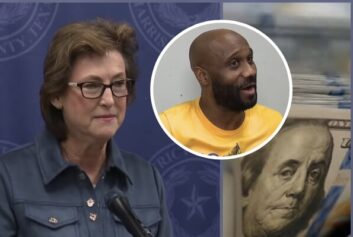Jozy Altidore scored his first international goal in his first start for the US Men’s National Team, heading in the go-ahead score in a game that ended 2-2 against Mexico. It was a lot more than a debut goal. It legitimized hope for soccer in America, birthed from love affairs with teams like the 1994 World Cup squad.
The same hope manifested itself in Freddy Adu. As a 14-year-old, he was featured in Sports Illustrated and was hailed as a great American superstar. He was far too young to bear the burden of such expectations; it ensured that, virtually, whatever career he had, the word “bust” would linger.
Bursting onto the scene at 16 when he was drafted by the New York Metrostars-turned-RedBulls, Altidore’s meteoric rise, combined with an emerging soccer community starved for a hero, brought him a tale less-chronicled yet similar to Adu’s.
Born in New Jersey to Haitian parents, Altidore scored three goals in seven matches for New York while traveling to Florida to get his high school diploma. Since then, Altidore’s story has been very stop-and-start, moving around from team to team with little success. Every sign of promise and hope has turned into more waiting. Waiting that prompts questions like, “Will he ever get there?”
Where “there” is, in the case of US soccer, has yet to be discovered. Though Clint Dempsey has earned cult-hero status, and stalwart Landon Donovan was widely heralded as the face of the team before his recent hiatus, neither player has truly been able to capture the imagination of the American public.
What is certain is that “there” exists; hence, the pressure Altidore and Adu faced. Pelé showed them it existed in 1977, when he played for the New York Cosmos. But American soccer was ready for someone of their own to take them to the promised land. American soccer was ready for a son.
Altidore and Adu tapped into that spirit and encouraged that excitement when they came onto the scene – an impressive feat for two black kids to accomplish in the world of soccer. They fed the beast, the growing sense that America wasn’t doomed in the soccer world after all, that the USMNT could one day be a force to be reckoned with.
“There is raw ability. Jozy has all the ingredients to be a terrific soccer player, anywhere,” said Eric Wynalda in 2008. Soon after, he was on the cover of the US version of FIFA.
But without major success, Altidore has been regarded as a tease and the public attitude turned.
That frustration remains for both parties. The recent criticism levied on coach Jürgen Klinsmann is the first real sign of expectation set for a USMNT coach. Despite knocking off Italy in Italy and beating Mexico in Mexico for the first time in US Soccer history en route to the best calendar year in US history, Klinsmann’s 12-5-7 record isn’t inspiring confidence. Fans are ready for a change from the same old. They are ready for American soccer’s first star.
–
Paul Caligiuri’s left foot is what set this all in motion.
Qualifying for the 1990 World Cup was the top priority for the USMNT in the late-’80s. It had been 40 years since the Yanks, as they are affectionately known worldwide, made an appearance.
In their final qualifier, the US needed a win against Trinidad and Tobago. On the road, Caligiuri dodged a defender and hoofed in an effort from 35 yards away, scoring what is commonly known in US Soccer lore as “the shot heard ’round the world.” The US haven’t missed the World Cup since.
Soccer hit a fever pitch in ’94, when the US squad – in the best jerseys of all time – took down vaunted Colombia at the Rose Bowl during the most highly attended World Cup ever.
The Women’s World Cup was the following year, with the USWNT capturing the title during a penalty shootout against China that starred Brandi Chastain’s bra.
At last, soccer achieved cultural significance in the American public eye.
Soccer still received the side-eye in American culture for at least a decade following, but the seed had been planted. Young soccer fans across the country took notice. With the help of FIFA, the game has become the second-most popular sport amongst males aged 18-24.
Altidore is one of those males. He watched games on the Fox Soccer Channel whenever he could. He was inspired when David Beckham came to the MLS.
He was also extremely talented – a problem in a soccer nation Wynalda described in 2012 as, “…at the stage…where the talent and abilities of our players now exceeds the knowledge of our coaches.”
So, after Altidore’s explosive entrance onto the scene in New York, he left America for Spain when Villarreal offered $10 million for his services – two-and-a-half times what Fulham paid for Dempsey to leave the MLS.
It was a lot of pressure for an 18-year-old kid still finding his footing. But his debut for Villarreal displayed the flashes of brilliance that made the price tag look to be worth it.
His speed, agility and athleticism are all there, but his touch and instincts still needed fine-tuning. After becoming the first American to score and to start a game in La Liga, he was sent out on loan to Xerez, a second division side, in the hopes of more consistent playing time.
It didn’t come. Caught in the middle of a promotional battle and unwilling to test new blood, Xerez kept Altidore on the bench.
“I have no idea what’s going on. I’m doing the day-to-day thing waiting for my chance to get on the field,” Altidore told the NYTimes. “There are times when it pops into my head wondering why they took me on loan…”
It was a frustrating experience for Altidore, a burgeoning talent in need of reps to fine-tune his raw ability. It’s not as if Altidore became a slouch. He scored four goals in two games for the USMNT, one against El Salvador and three goals against Trinidad and Tobago five days later in Nashville, TN, becoming the youngest US player to score a hat trick.
A toe injury in April 2009 meant Altidore never made an appearance on his loan spell to Xerez; a year of youth wasted.
Hungry, Altidore sought a move to Hull City in England. But despite setting up a goal with his first touch, scoring on his second appearance and becoming a fan favorite in the process, Altidore’s playing time – once again – became hard to find. He wouldn’t score again until his 18th League game. Questions started to come.
Adu, now Altidore’s close friend, spoke about some of the challenges the two of them faced.
“Take two players, look at myself and Jozy. We’re in the same situation. And even Michael Bradley. Michael Bradley goes from Heerenveen where he scores something like 20 goals or whatnot and goes to Germany, and he was playing in spurts, at one point, until they started starting him. Finally being a full-time starter. It’s not easy. You’ve really gotta earn it. You really have to grind it out. And that’s what we’re trying to do.”
Altidore wouldn’t have to wait much longer. After a nondescript spell at Turkish side Bursaspor, he signed in the Netherlands with AZ Alkmaar on July 15, 2011.
Altidore’s game started to come together. He scored 22 goals in his first season and became unfazed by the competition in Europe.
But this season has been Altidore’s coming-out party. He started out the season hot, scoring eight goals on the teams first seven games. He passed Dempsey’s European goal mark of 23 goals in a season and now has 25. His touch has reformed from touch-and-run to more sophisticated, calculated maneuvers.
In short, Altidore has found his game.
–
“This team is in a transition,” Klinsmann told The Sporting News. “Between two World Cup cycles, faces change. We’re doing that, and you also kind of mix up the chemistry. There will be a new group of leaders coming through that process, and that will be responsible for molding everything together.”
Whether Klinsmann’s great experiment is working has yet to be determined, but the questions surrounding the USMNT’s progress under his reign indicates a level of interest and importance within the public. There aren’t any passes in America for good effort anymore. There are expectations.
That’s the harsh lesson Altidore had to learn during his short career. No one cared about his FIFA covers in Europe. But now that he’s put in the time, he’s starting to see results.
The next step in his evolution is at the national level, but Klinsmann’s mix-it-up strategy means Altidore hasn’t been given the starting job up-front just because he’s scored a few goals. No matter what the players’ opinions of Klinsmann’s strategies, it is clear he wants all of his players on edge, fighting for their positions on the team and in the lineup. Altidore seems to be speaking his language .
“I understand where he’s coming from…It’s also going to take time; it won’t come overnight,” Altidore said, referring to sharpening an edge that, while not nasty, is certainly not nice. “I don’t think he’s saying we need to be nasty, just that we have to have this intensity. As people, we can be great guys off the field, but when we step on the field we have to be tough. That doesn’t define you as a person, but on the field we don’t have to be nice guys.
Though he was left out of the squad in October, Altidore is back in the fold for this round of World Cup qualifiers. His shot set up the USMNT’s only goal in a 1-0 win against Costa Rica that got the US back on track in qualifying, even if it was hard to glean much from the blizzard-affected match.
Their next match is in Mexico and how far the teams – and Altidore – have come will be on full display. Will he finally live up to the promised hope? Will America give birth to its first soccer son?
Altidore knows it’s not when you’re ready, but when the time is right. The clock, surely, must not be ticking for much longer.



